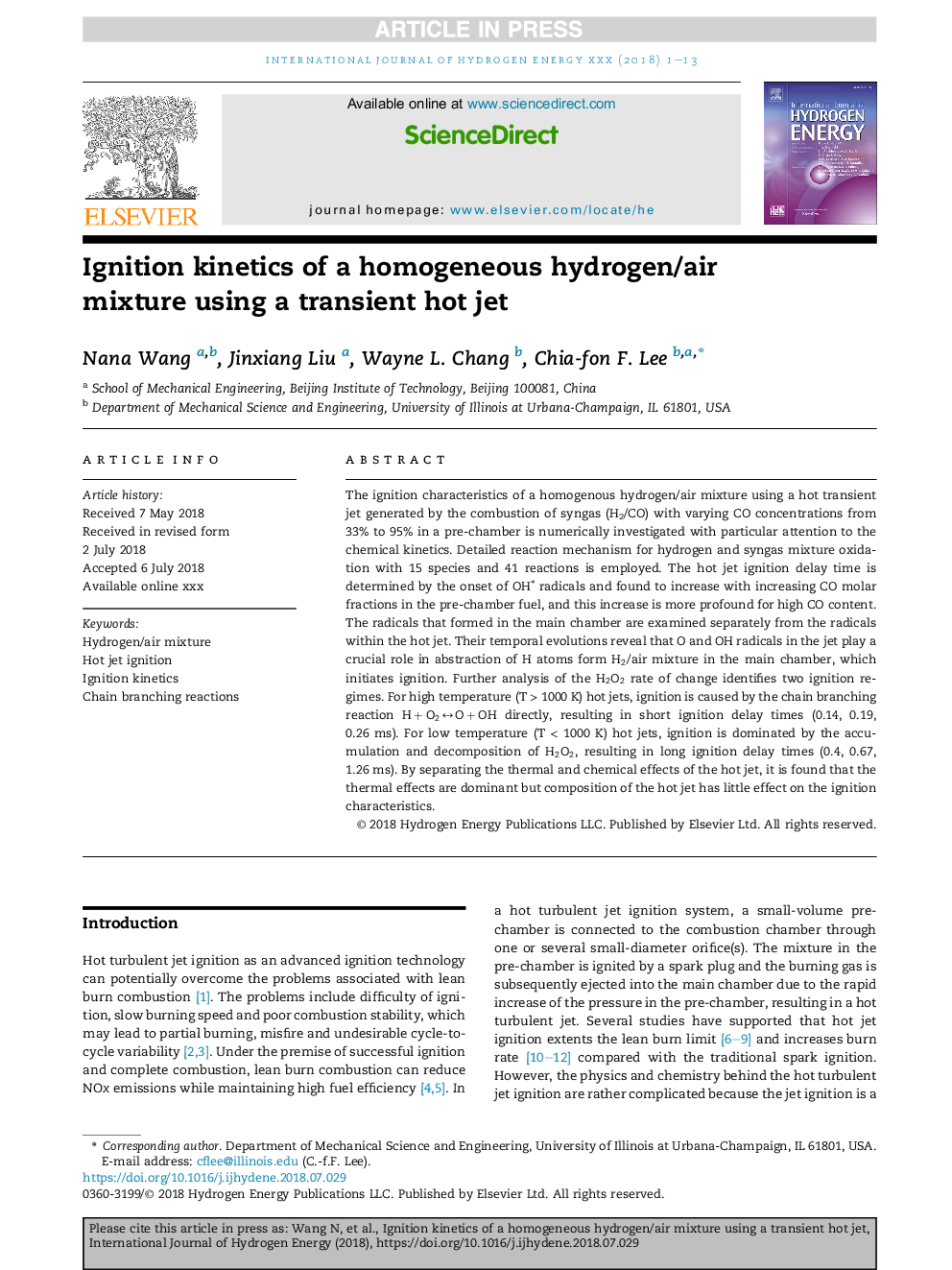| Article ID | Journal | Published Year | Pages | File Type |
|---|---|---|---|---|
| 8961320 | International Journal of Hydrogen Energy | 2018 | 13 Pages |
Abstract
The ignition characteristics of a homogenous hydrogen/air mixture using a hot transient jet generated by the combustion of syngas (H2/CO) with varying CO concentrations from 33% to 95% in a pre-chamber is numerically investigated with particular attention to the chemical kinetics. Detailed reaction mechanism for hydrogen and syngas mixture oxidation with 15 species and 41 reactions is employed. The hot jet ignition delay time is determined by the onset of OHâ radicals and found to increase with increasing CO molar fractions in the pre-chamber fuel, and this increase is more profound for high CO content. The radicals that formed in the main chamber are examined separately from the radicals within the hot jet. Their temporal evolutions reveal that O and OH radicals in the jet play a crucial role in abstraction of H atoms form H2/air mixture in the main chamber, which initiates ignition. Further analysis of the H2O2 rate of change identifies two ignition regimes. For high temperature (TÂ >Â 1000Â K) hot jets, ignition is caused by the chain branching reaction H+O2âO+OH directly, resulting in short ignition delay times (0.14, 0.19, 0.26Â ms). For low temperature (TÂ <Â 1000Â K) hot jets, ignition is dominated by the accumulation and decomposition of H2O2, resulting in long ignition delay times (0.4, 0.67, 1.26Â ms). By separating the thermal and chemical effects of the hot jet, it is found that the thermal effects are dominant but composition of the hot jet has little effect on the ignition characteristics.
Related Topics
Physical Sciences and Engineering
Chemistry
Electrochemistry
Authors
Nana Wang, Jinxiang Liu, Wayne L. Chang, Chia-fon F. Lee,
